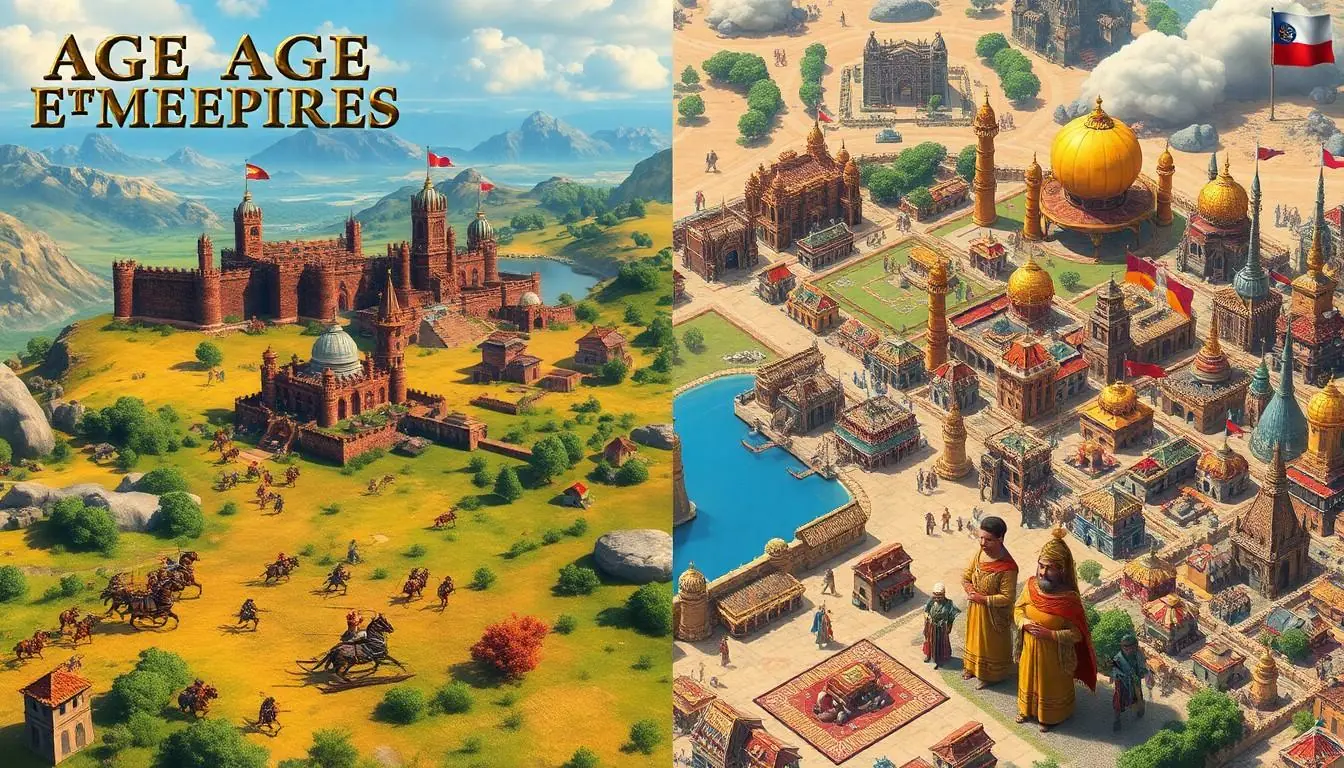In the epic showdown of strategy games, “Age of Empires” and “Civilization” stand tall like titans. Each game offers a unique blend of history, strategy, and a sprinkle of chaos that keeps players glued to their screens. Whether you’re a fan of building sprawling empires or meticulously managing civilizations through the ages, the debate rages on: which game reigns supreme?
Table of Contents
ToggleOverview of Age of Empires and Civilization
“Age of Empires” and “Civilization” offer captivating strategies focused on empire-building and historical narratives. These games engage players through unique mechanics and rich historical content.
Game Development History
“Age of Empires” debuted in 1997, created by Ensemble Studios. This franchise emphasizes real-time strategy, attracting players with its historical accuracy. Meanwhile, “Civilization” first released in 1991, developed by Sid Meier. The turn-based gameplay encourages long-term planning, allowing players to grow civilizations over centuries. Both series have evolved significantly, introducing expansions and sequels that enhance core experiences. Each franchise continues to receive updates, ensuring they remain relevant in today’s gaming landscape.
Primary Objectives and Gameplay Mechanics
Players in “Age of Empires” primarily aim to develop civilizations through resource management and military conquest. Gathering resources like wood, stone, and food is essential for constructing buildings and training units. Units deploy in real-time battles against opponents, requiring quick decision-making. In contrast, “Civilization” focuses on winning through diplomacy, technology, culture, or military dominance. Players advance through distinct eras, making strategic choices that influence civilizations’ growth. Mechanics like science research and city management play crucial roles in defining player strategies, leading to diverse gameplay experiences.
Graphics and Aesthetics
Graphics and aesthetics play crucial roles in shaping player experiences in both “Age of Empires” and “Civilization.” Each game offers distinct visual styles that reflect their historical narratives and gameplay mechanics.
Visuals and Art Style
“Age of Empires” features detailed, historically inspired graphics. Environments shift from lush forests to arid deserts, showcasing various civilizations. Each unit and building has intricate designs, enhancing immersion. In contrast, “Civilization” uses a more stylized, artistic approach. The vibrant colors and unique visual motifs vary by civilization. Players see familiar icons representing historical figures, technologies, and wonders, adding to the strategic experience.
User Interface Design
User interface design in “Age of Empires” emphasizes clarity and accessibility. Toolbars and menus are intuitive, facilitating quick navigation during fast-paced gameplay. Command buttons for units and structures are prominent, ensuring players easily manage resources. Conversely, “Civilization” utilizes a more complex interface, reflecting its turn-based strategy. Information panels provide insights into resources, technologies, and diplomatic standings. While this depth benefits long-term strategy, it may overwhelm new players who seek a streamlined experience.
Gameplay Experience
Both “Age of Empires” and “Civilization” offer unique gameplay experiences that engage players in distinct ways.
Economic Management
Resource management stands at the core of gameplay in both titles. In “Age of Empires,” players gather resources like food, wood, and gold to expand their civilizations. Quick decisions influence economic growth, as players must balance resource collection with building military units. “Civilization” takes a different approach, allowing players to develop economies through trade, infrastructure, and technology. This long-term planning encourages a more strategic focus. Players invest in agricultural advancements and trade routes, ensuring prosperity over time. Both games challenge players to optimize their economic strategies for success.
Combat Strategies
Fast-paced battles define “Age of Empires” combat. Players maneuver armies in real time, requiring quick reflexes and tactical awareness. They mix unit types to counter opponents, adapting strategies to various scenarios. Conversely, “Civilization” offers a more deliberate combat approach. Players engage in turn-based warfare, emphasizing strategy over speed. They can conduct diplomatic negotiations or leverage technology for military upgrades. Each game cultivates a different mindset; players in “Age of Empires” thrive under pressure, while those in “Civilization” plan carefully for the long game.
Multiplayer Features
Both “Age of Empires” and “Civilization” offer engaging multiplayer features to enhance player experience. Each game provides unique ways for players to connect and compete.
Online Play Capabilities
“Age of Empires” supports online play through various modes, allowing for real-time strategy battles with friends and strangers. Players can join custom games or ranked matches, fostering a competitive atmosphere. “Civilization,” in contrast, focuses on asynchronous multiplayer, enabling players to take their turns at their convenience. This flexibility appeals to individuals with busy schedules, maintaining engagement without the need for constant presence.
Community Engagement
Strong community engagement defines both franchises. “Age of Empires” thrives on player-generated content, including mods and maps, which enrich the gameplay experience. In “Civilization,” forums and social media channels allow enthusiasts to share strategies, discuss game mechanics, and participate in events. These platforms not only build camaraderie among players but also foster long-term loyalty to each game series.
Cultural Representation
Both “Age of Empires” and “Civilization” showcase diverse cultures, each enriching the gameplay experience through distinct civilizations and historical accuracy.
Civilizations and Factions
“Age of Empires” highlights various civilizations, each with unique units and technologies, reflecting their historical significance. Players engage with cultures like the Greeks, Romans, and Chinese, each providing advantages in specific scenarios. “Civilization” also features a wide range of factions; iconic leaders like Gandhi, Cleopatra, and Montezuma represent their nations. This variety allows players to adopt different strategies based on their chosen civilizations’ strengths and weaknesses.
Historical Accuracy
“Age of Empires” emphasizes real-world historical events, weaving them into its narratives and gameplay mechanics. The game includes accurate representations of buildings and technologies, enhancing the player’s immersion in ancient history. In contrast, “Civilization” offers a broader historical scope, encouraging players to reshape history through technology and politics. The timeline spans from ancient times to the future, enabling players to explore potential outcomes based on their decisions. Each game invites players to experience history in unique, engaging ways.
Conclusion
Choosing between “Age of Empires” and “Civilization” ultimately depends on personal preferences. Players who enjoy fast-paced, real-time strategy may find “Age of Empires” more appealing, while those who prefer thoughtful, turn-based gameplay might lean towards “Civilization.” Each game offers a unique approach to empire-building and historical narratives, ensuring a rich experience for all types of strategy enthusiasts.
Both franchises continue to evolve, captivating new generations of gamers. Whether it’s the immersive battles of “Age of Empires” or the intricate diplomacy of “Civilization,” the debate over which game reigns supreme will persist among fans. Ultimately, both titles provide a gateway to exploring history and strategy in engaging ways, solidifying their places in the gaming world.




